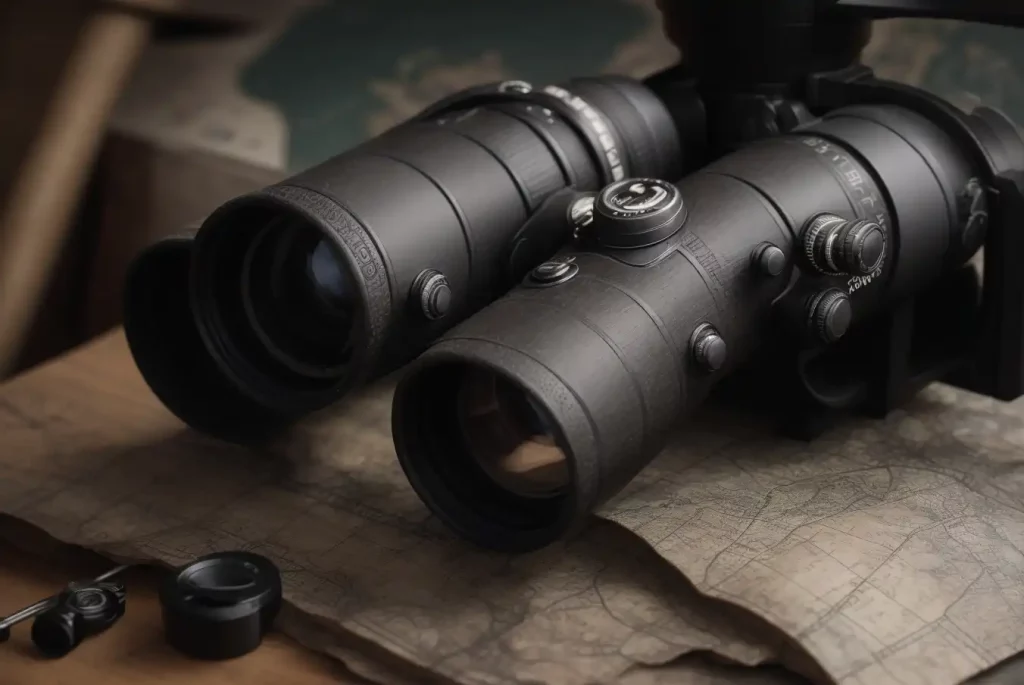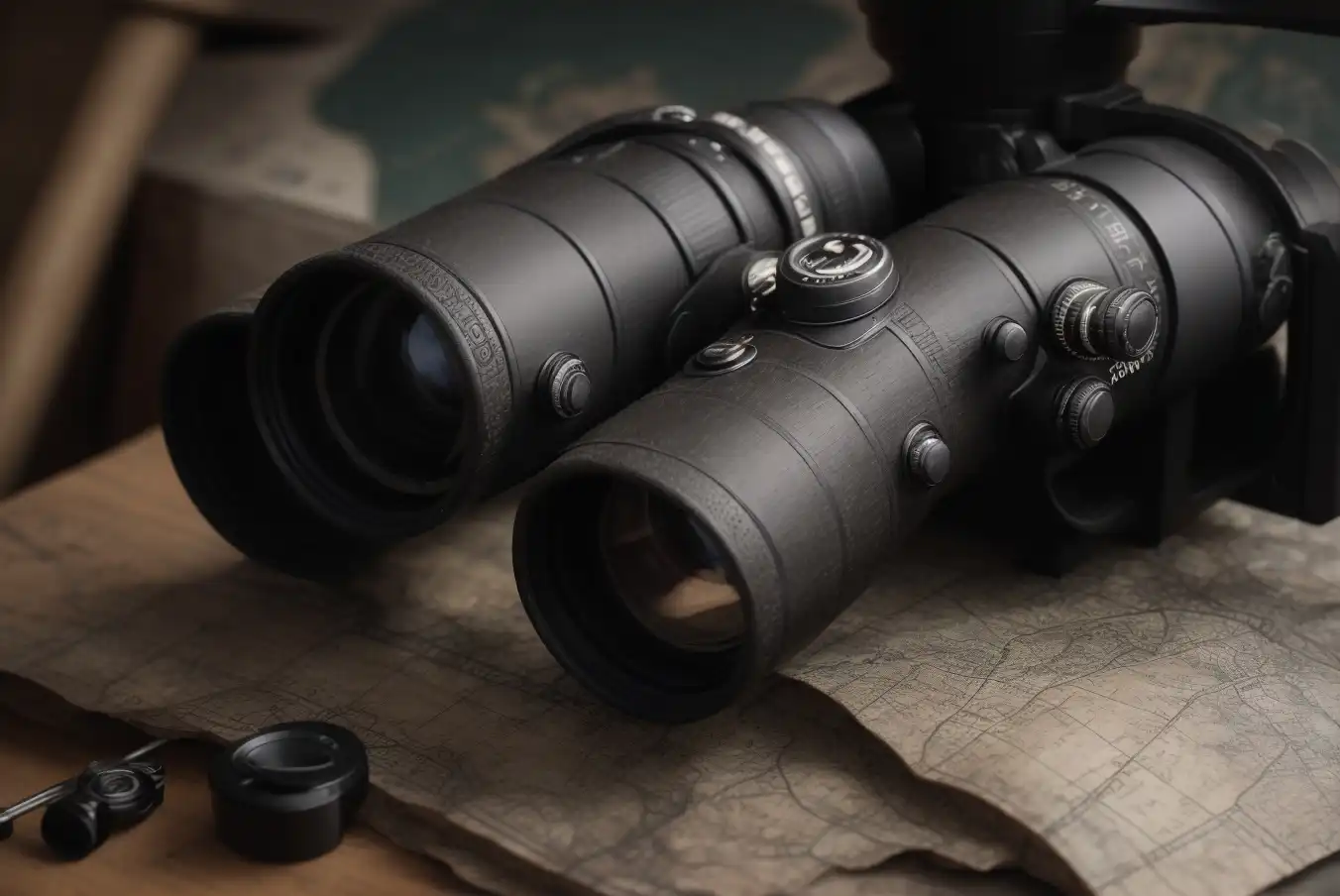Are you an avid birdwatcher or a nature enthusiast who wears glasses? Do you find it frustrating to use binoculars because they don’t fit comfortably over your eyewear?
Well, worry no more! In this guide, we will explore the art of using binoculars with glasses, ensuring that you never miss a moment of the breathtaking beauty that nature has to offer. Wearing glasses should never hinder your ability to appreciate the wonders of the world around you.
Binoculars, with their ability to bring distant objects into sharp focus, are an essential tool for any outdoor adventure. However, the challenge lies in finding the right technique to use them in conjunction with your glasses.
How to Use Binoculars with Glasses:
- Adjust the eyecups of the binoculars to the desired position.
- Put on your glasses and position the binoculars against your eyes.
- Look through the binoculars and adjust the focus wheel until the image appears sharp.
- If necessary, adjust the diopter on one eyepiece to compensate for any difference in vision between your eyes.
- Enjoy the clear and magnified view!
How to Use Binoculars with Glasses
If you wear glasses and enjoy using binoculars for birdwatching, stargazing, or any other outdoor activity, you may have encountered some challenges when trying to use both your glasses and binoculars simultaneously. However, with the right techniques and adjustments, you can ensure a comfortable and clear viewing experience. In this guide, we will provide you with step-by-step instructions on how to use binoculars with glasses, allowing you to fully enjoy your outdoor adventures.

Step 1: Adjust the Eyecups
The first step in using binoculars with glasses is to adjust the eyecups. Most binoculars come with adjustable eyecups that can be folded or twisted up or down. If you wear glasses, you should keep the eyecups in the fully extended or folded-down position. This allows the eyecups to create a comfortable distance between your glasses and the binocular lenses, ensuring that you can see the entire field of view without any obstructions.
Additionally, if your binoculars have retractable eyecups, you can try partially retracting them to find the optimal position for your glasses. Experiment with different positions until you find the one that provides the best view and comfort for your specific glasses.
Step 2: Adjust the Diopter Settings
Next, you need to adjust the diopter settings on your binoculars. The diopter adjustment allows you to compensate for any differences in vision between your two eyes. To start, cover the objective lenses (the larger lenses) of the binoculars with the lens caps or your hands. This will allow you to focus solely on the diopter adjustment.
Look through the binoculars with your glasses on and focus on a distant object. While looking at the object, use the diopter adjustment wheel or ring, typically located on the right eyepiece, to adjust the focus of the binoculars until the image appears sharp and clear. Once you have achieved clear focus, lock the diopter adjustment in place, if possible, to prevent any accidental changes while using the binoculars.
Step 3: Find the Right Eye Relief
Eye relief refers to the distance between your eyes and the binocular eyepieces that allows you to see the entire field of view. This is particularly important for glasses wearers, as you need enough space to comfortably position your eyes without your glasses touching the binocular lenses.
Check the specifications of your binoculars to determine the recommended eye relief measurement. Most binoculars have an eye relief of around 15-20mm. Adjust the eyecups and the distance between your eyes and the binoculars until you can see the entire field of view without any dark circles or vignetting. This will ensure that you have a full and unobstructed view while wearing your glasses.
Step 4: Practice and Familiarize Yourself
Once you have made the necessary adjustments, it’s time to practice and familiarize yourself with using binoculars with glasses. Spend some time exploring different objects at varying distances and adjusting the focus as needed. By practicing, you will become more comfortable and efficient in using binoculars with glasses, allowing you to fully enjoy your outdoor activities without any visual hindrances.
Remember to clean your binocular lenses regularly and store them in a safe and protective case when not in use. Proper maintenance will ensure that your binoculars continue to provide you with clear and enjoyable viewing experiences for years to come.
Frequently Asked Questions
Here are some common questions about using binoculars with glasses:
Q: Can I use binoculars with my glasses?
A: Yes, you can use binoculars with your glasses. Most binoculars have adjustable eyecups that can be twisted up or down to accommodate users who wear glasses. By twisting the eyecups down, you create a space between the eyepiece and your glasses, allowing you to see the full field of view without any obstruction. This ensures that you can enjoy a clear and comfortable viewing experience while wearing your glasses.
However, it’s important to note that not all binoculars are designed to be used with glasses. Some models may have short eye relief, which means you need to press your glasses against the eyepiece to see the full image. So, when choosing binoculars, look for models with long eye relief to ensure compatibility with glasses.
Q: How do I adjust the focus when using binoculars with glasses?
A: Adjusting the focus while using binoculars with glasses is similar to using them without glasses. First, make sure the eyecups are twisted down to create a space between the eyepiece and your glasses. Then, look through the binoculars at your desired subject and use the central focus wheel to adjust the focus. Turn the wheel clockwise or counterclockwise until the image appears sharp and clear.
Keep in mind that some binoculars also have a diopter adjustment, usually located on one of the eyepieces. This allows you to compensate for any differences in vision between your eyes. Set the diopter adjustment by focusing on a distant object with your dominant eye and then adjusting the diopter until the image is clear. Once set, you can use the central focus wheel to fine-tune the focus for both eyes.
Q: Can I wear my glasses while using binoculars for extended periods?
A: Yes, you can wear your glasses while using binoculars for extended periods. However, it’s important to ensure that the binoculars you choose have comfortable eye relief, which is the distance between the eyepiece and your eye. Look for binoculars with long eye relief to minimize any discomfort or pressure on your glasses. Additionally, take breaks if you start feeling any discomfort or strain on your eyes or face.
Using binoculars for extended periods with glasses may cause some users to experience a reduced field of view due to the distance between the eyepiece and the glasses. However, modern binoculars with adjustable eyecups and long eye relief are designed to minimize this issue and provide a comfortable viewing experience for individuals who wear glasses.
Q: Can I use contact lenses instead of glasses when using binoculars?
A: Yes, you can use contact lenses instead of glasses when using binoculars. In fact, using contact lenses can enhance your viewing experience as they eliminate the need for adjusting the eyecups or worrying about eye relief. Without glasses obstructing the view, you can enjoy the full field of view provided by the binoculars.
However, it’s important to keep in mind that contact lenses require proper care and maintenance. Make sure your lenses are clean, well-fitted, and comfortable before using them with binoculars. If you experience any discomfort or dryness while wearing contact lenses, it’s advisable to take a break and rest your eyes.
Q: Are there any special binoculars designed specifically for glasses wearers?
A: Yes, there are binoculars specifically designed for glasses wearers. These binoculars often have features like long eye relief, adjustable eyecups, and larger exit pupils to accommodate users who wear glasses. They are designed to provide a comfortable and immersive viewing experience without any obstruction caused by glasses.
When choosing binoculars for glasses wearers, look for models that offer at least 15mm of eye relief or more. This ensures that there is enough space between the eyepiece and your glasses to see the entire field of view. Additionally, consider binoculars with twist-up eyecups that can be easily adjusted to fit your glasses. These features ensure optimal comfort and clarity when using binoculars with glasses.
In conclusion, learning how to use binoculars with glasses can greatly enhance your outdoor experiences and open up a whole new world of visual exploration. By following the simple steps outlined in this guide, you can ensure a comfortable and seamless viewing experience, allowing you to fully immerse yourself in the beauty of nature and beyond. Whether you are an avid birdwatcher, a wildlife enthusiast, or simply enjoy observing distant landscapes, the combination of binoculars and glasses can bring clarity and detail to your observations like never before.
Remember, the key is to find the right binoculars that are compatible with your glasses, adjust the eyecups to accommodate your eye relief, and practice proper technique to eliminate any discomfort or image distortion. By mastering these skills, you will be able to enjoy a whole new level of detail and magnification, bringing the world closer to your eyes. So, grab your binoculars, put on your glasses, and embark on a journey of discovery with the perfect combination of vision aids – the possibilities are endless!

